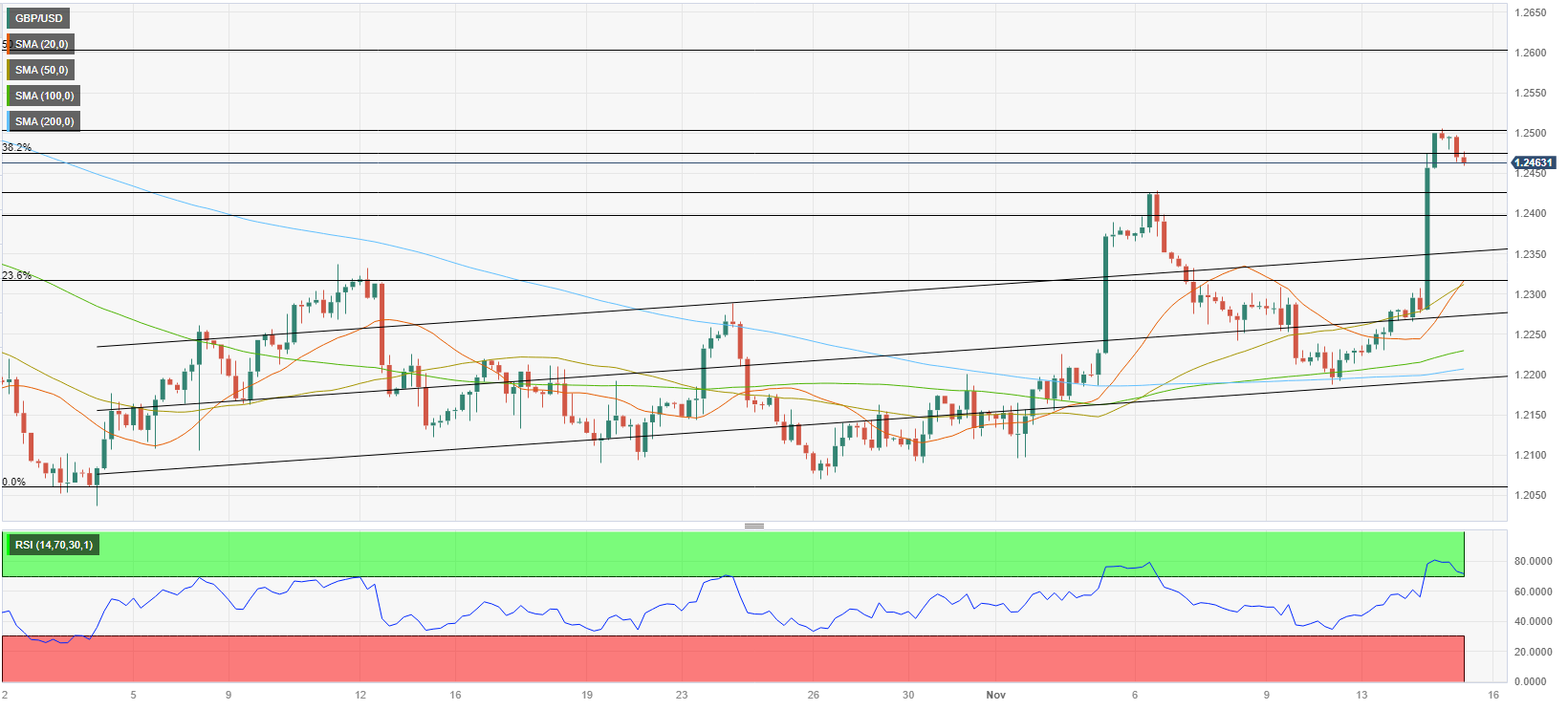Pound Sterling Price News and Forecast: GBP/USD rally loses steam after UK inflation data

GBP/USD short term Elliott Wave structure suggests further upside [Video]
GBPUSD shows a 5 swing sequence from 10.4.2023 low favoring further upside. The rally from 10.4.2023 low takes the form of a double three Elliott Wave structure or a double zigzag. Up from 10.4.2023 low, wave W ended at 1.24.28 and dips in wave X ended at 1.2186. Internal subdivision of wave X unfolded as a zigzag Elliott Wave structure. Down from wave W, wave ((a)) ended at 1.224 and wave ((b)) ended at 1.2309. Wave ((c)) lower ended at 1.2187 which completed wave X. Read more…
GBP/USD Forecast: Pound Sterling rally loses steam after UK inflation data
GBP/USD registered impressive gains on Tuesday and rose above 1.2500 for the first time in two months. With the Pound Sterling losing some interest following the UK inflation data early Wednesday, the pair erased a small portion of its recent gains.
The UK’s Office for National Statistics reported that the Consumer Price Index (CPI) rose 4.6% on a yearly basis in October, much softer than the 6.7% increase recorded in September. In the same period, the Retail Price Index rose 6.1%, compared to 8.9% in September, and the Producer Price Index – Input declined 2.6%. Read more…
Pound Sterling aims recovery as upbeat mood outweighs soft UK inflation
The Pound Sterling (GBP) faced a nominal sell-off after refreshing a two-month high as price pressures in the UK economy softened significantly in October. Annual headline Consumer Price Index (CPI) grew at a slower pace of 4.6%, adding to signs that UK Prime Minister Rishi Sunak will be able to fulfill his promise of halving inflation by the year-end. Meanwhile, the UK Producer Price Index (PPI) fell, suggesting that goods producers were forced to cut prices at factory gates due to a poor demand outlook.
The GBP/USD pair surrendered nominal gains after a soft inflation report but broader demand is strong due to the improved risk appetite of the market participants. The appeal for risk-perceived assets increased significantly after easing consumer inflation in the US economy and elevated hopes of no more interest rate increases from the Federal Reserve (Fed). Read more…
